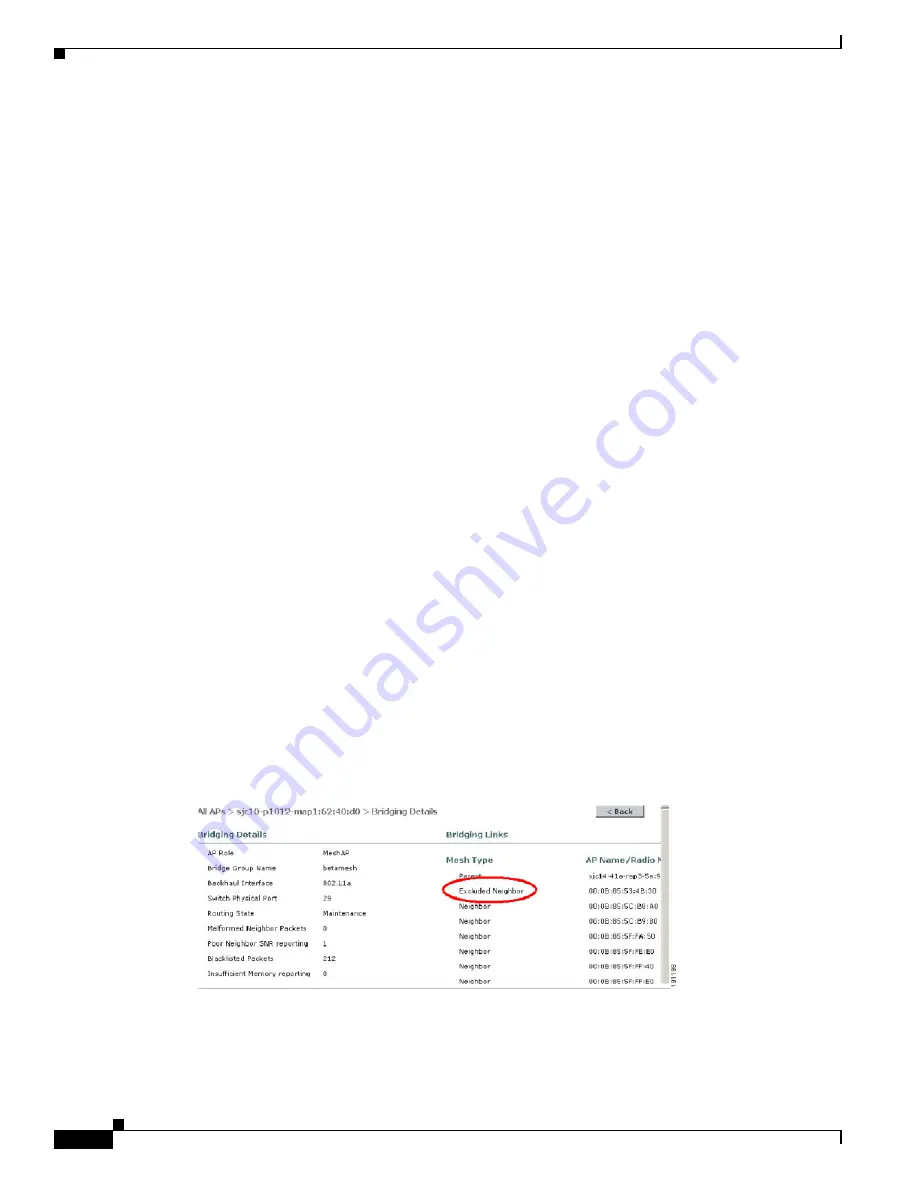
148
Cisco Aironet 1520, 1130, 1240 Series Wireless Mesh Access Points, Design and Deployment Guide, Release 6.0
OL-20213-01
Troubleshooting
The basic idea relies on the following five major steps:
1.
Honeypot detection—The honeypots are first detected via the following steps.
A parent node is set by the AWPP module, by:
–
A static IP attempt in CAPWAP module.
–
A DHCP attempt in the DHCP module.
–
A CAPWAP attempt to find and connect to a controller fails.
2.
Honeypot conviction—When a honeypot is detected, it is placed in a exclusion-list database with its
conviction period to remain on the list. The default is 32 minutes. Other nodes are then attempted as
parents in the following order, falling back to the next, upon failing the current mechanism:
–
On the same channel.
–
Across different channels (first with its own bridgegroupname and then with default).
–
Another cycle, by clearing conviction of all current exclusion-list entries.
–
Rebooting the AP.
3.
Non-honeypot credit—It is often possible that a node is not a really a honeypot, but appears to be
due to some transient backend condition, such as:
–
The DHCP server is either not up-and-running yet, has failed temporarily, or requires a reboot.
–
The WLAN controller is either not up-and-running yet, has failed temporarily, or requires a
reboot.
–
The Ethernet cable on the RAP was accidentally disconnected.
Such non-honeypots must be credited properly from their serving times so that a node can come back
to them as soon as possible.
4.
Honeypot expiration—Upon expiration, an exclusion-list node must be removed from the
exclusion-list database and return to normal state for future consideration by AWPP.
5.
Honeypot reporting—Honeypots are reported to the controller via LWAPP mesh neighbor message
to the controller, which shows these on the Bridging Information window. A message is also
displayed the first-time an exclusion-listed neighbor is seen. In subsequent software release, an
SNMP trap will be generated on the controller for this condition so that Cisco WCS can record the
occurrence.
shows the bridging details.
Figure 86
Excluded Neighbor






























